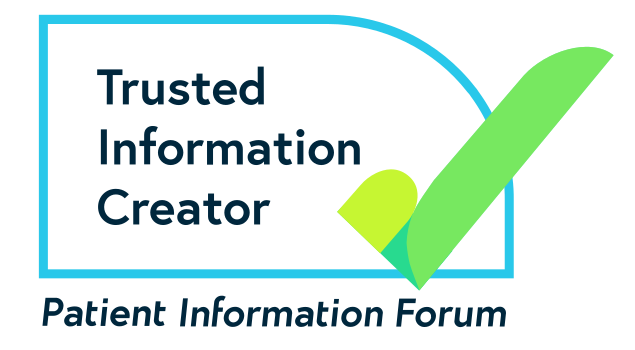Our condition-specific alert cards provide crucial information for emergency healthcare professionals treating patients with muscle wasting conditions.
GNE myopathy
GNE myopathy is a rare genetic condition that causes progressive muscle weakness and atrophy (shrinkage or weakening of the muscles). It typically begins in late adolescence, or early adulthood between 20 and 40 years of age, and affects the lower legs first, causing foot drop and difficulty walking. Over time, other muscles may also be affected.
GNE myopathy is a part of a group of conditions called distal myopathies, which initially affect the muscles in the hands, feet, lower legs, or forearms. GNE myopathy is also known by other names, including Nonaka myopathy, distal myopathy with rimmed vacuoles, quadriceps-sparing myopathy, and hereditary inclusion myopathy type 2.
Muscle weakness
Muscle weakness is the main symptom of GNE myopathy and usually starts in the lower part of the legs. Foot drop, the inability to raise the front of the foot due to weakness, is a common first symptom. This weakness can lead to an unsteady gait (a person’s walking pattern) and a higher risk of falls. People with GNE myopathy may struggle to walk on their heels, climb stairs, or get up from the floor. The severity and rate of progression is different from person to person, even within families where more than one person is affected.
People living with GNE myopathy may also eventually experience weakness in their hands and shoulder muscles. This can lead to difficulties in carrying out fine motor tasks, such as gripping objects and using buttons.
Over time, muscle weakness can progress to those muscles closer to the centre of the body (proximal muscles), such as the thighs and hips. However, the quadricep muscles, located at the front of the thighs, typically remain unaffected. Some people also develop weakness in the torso and neck muscles, which can affect curvature of the spine and neck strength.
In the advanced stages of GNE myopathy, it can become increasingly difficult to carry out daily activities and be mobile. Where there is severe muscle weakness, a person may need to use a wheelchair. A powered wheelchair or a riser-recliner chair can help maintain independence.
Respiratory and cardiac
GNE myopathy doesn’t usually affect the heart, lungs, or muscles used for speech and swallowing. However, cardiac rhythm problems and respiratory muscle weakness have been reported and should be considered if symptoms occur.
Genetic changes
GNE myopathy is caused by changes in the GNE gene. This gene provides instructions to produce an enzyme needed to make sialic acid. Sialic acid is a molecule that is important for muscle function. When the GNE gene doesn’t work properly, the body doesn’t make enough sialic acid. This causes the muscles to weaken and waste over time. The precise way this happens is not yet fully understood.
Inheritance
GNE myopathy is typically inherited in an autosomal recessive pattern, which means a person must have inherited two copies of the changed gene (one from each parent) to develop the condition. Parents of a person with GNE myopathy are carriers if they don’t have the condition themselves. Sometimes there is no family history of the condition.
GNE myopathy can affect anyone. But in South Asia it is the one of the most common types of myopathies. It’s also more common in people with Middle Eastern and Japanese ancestry. This means people from these backgrounds may be more likely to have the condition due to their genes.
For more information, see our inheritance and genetics page.
A GP can make a referral to a neurologist for testing. A neurologist is a doctor who specialises in conditions that affect the muscles and nervous system. They will initially diagnose distal myopathy, based on clinical symptoms, family history, physical examination, and tests. Tests may include a blood test to check creatine kinase (CK) levels and electromyography (EMG). An MRI scan of the leg muscles can also be helpful to confirm the diagnosis of distal myopathy, as GNE myopathy affects certain muscles in a recognisable pattern.
Once the clinical diagnosis of distal myopathy is made, a further blood test for genetic testing may be carried out to look for changes in the genes known to cause inherited myopathies, including the GNE gene. In some cases, a muscle biopsy may be needed to understand the genetic changes. It involves taking a small sample of muscle tissue to examine under a microscope. In GNE myopathy, a biopsy may show rimmed vacuoles (circular structures in the muscle containing proteins) and muscle atrophy. However, a muscle biopsy may not be needed if genetic testing provides a definitive diagnosis.
For more information, see our diagnosis page.
A multi-disciplinary approach, different healthcare professionals working together, is important to manage the person’s condition and symptoms, along with wellbeing. Condition management will vary depending on the severity of symptoms.
Currently, there are no disease-modifying treatments available for GNE myopathy, but research is ongoing. Gene therapy strategies and sialic acid supplements are being investigated. At this time, there is no definitive evidence that sialic acid supplements improve GNE myopathy.
Access to a healthcare team
People with GNE myopathy should have access to a multi-disciplinary healthcare team. Usually, the lead professional will be a neurologist. If you do not have contact with a neurologist or specialist doctor, speak to your GP to get a referral to one.
Exercise and physiotherapy
Keeping as physically active as possible and maintaining a healthy lifestyle is encouraged. A physiotherapist is a healthcare professional who helps manage symptoms through movement, exercise, and manual therapy. They can assess individual needs and put together a suitable exercise plan to help maintain muscle strength and flexibility. Regular stretching and moderate low-impact exercise such as swimming, walking, and pedalling are recommended. This type of aerobic exercise helps maintain healthy cardiovascular and musculoskeletal systems and a steady weight. Before starting any new form of exercise, discuss it with your clinician. Pacing (with rest and a gradual build-up of exercise) can be important, particularly when starting exercise and managing fatigue. To find out more about advice for adults, see exercising with a muscle wasting condition.
Mobility and aids
As the condition progresses, people may need to use walking aids to maintain their mobility. A physiotherapist can provide advice on the best options. Wheelchair users may be at a higher risk of weak bones (osteoporosis), which can lead to fractures. They are also more likely to develop stiff joints (contractures), which can reduce movement. Physiotherapists can prescribe wheelchair-based exercises and assess posture to lower these risks.
Occupational therapy services develop practical solutions and provide necessary aids and equipment to make things more manageable at home. Minor aids, such as handrails, perching stools, or ramps for wheelchair access, can be provided for free. Information on how to access local occupational therapy services can be found on local council websites or through a GP.
Orthotics
Orthotic devices are supports or braces used to help manage foot drop and may improve walking, reducing the risk of falls. A variety of useful orthotics are available, including splints, shoe insoles, and ankle and leg braces. These can be prescribed by an orthotics team after referral from a GP or specialist. Orthotics services need to be contacted again if supports and braces are uncomfortable or do not fit properly so that adjustments can be made.
Respiratory
Breathing muscles are typically not affected in GNE myopathy, but monitoring of lung function may be recommended. Some people may be at higher risk of respiratory weakness and respiratory failure. Annual flu vaccines are recommended and those with respiratory weakness should have the pneumococcal and COVID-19 vaccines

Author: Muscular Dystrophy UK
Reviewers: Dr Jasper Morrow and Dr Andria Merrison
Last reviewed: March 2025
Next review due: March 2028
We are here for you
Webinars, Information Days, and support groups for our muscle wasting community. Our life-changing support is here for you.
Advice for living with or caring for someone with a muscle wasting condition.
